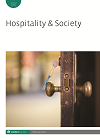
Full text loading...
 , Fiona Hurd2
, Fiona Hurd2
Despite prohibitive legislation and organizational policies and training, high rates of sexual harassment persist in the hospitality industry, a situation that is concerning to organizations and researchers alike. As management educators, we embedded a sexual harassment lecture within the context of a human resource management degree, with the aim of developing the capacity of the future human resource practitioner workforce to address sexual harassment. The reflective journals of these students, collected over a three-year period, reveal that while participants found the session improved their understanding of sexual harassment myths and remedies, many still questioned their ability to act within the context of wider organizational dynamics. Our analysis leads us to conclude that sexual harassment training sessions are a valuable and necessary starting point for developing intolerance. However, if we are truly committed to eradicating sexual harassment, then a much broader and integrated approach is required that includes redressing the limitations of the current legal systems, broadening the scope of education within the wider community and developing intolerant organizational climates.

Article metrics loading...

Full text loading...
References


Data & Media loading...

Publication Date:
https://doi.org/10.1386/hosp_00027_1 Published content will be available immediately after check-out or when it is released in case of a pre-order. Please make sure to be logged in to see all available purchase options.